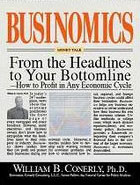If Adam Smith had observed the modern telecom industry, he might have added some interesting insights. The father of modern economics noted that division of labor had led to great improvements in mankind’s material wealth, but the system was never designed by anyone. It developed spontaneously as various people started specializing and trading. No one in prehistoric times had a guiding vision of what the process would look like by 1776, when Smith’s The Wealth of Nations was published.
What would Adam Smith have added had he been able to watch the telecom industry? That the process of order arising from small actions by various individuals can be very messy indeed, even if the final result is a great improvement for consumers.

The forces impacting “telephone” communications today include a new round of network effects, drawbacks of all-cellular service, as well as the fragility and limitations of VOIP. More turmoil is on the way as individual consumers, service providers and manufacturers all take steps to improve their own situation. Out of the turmoil, though will come big gains for some and losses for others. The providers with a clearer vision of the future—as best we can see it from the viewpoint of today—will do better as the dust settles on this industry.
Network effects are now driving smart phone usage beyond what the obvious features of the devices would suggest. A network effect occurs when my usage of a device is influenced by the number of my contacts who also use it. In the classic example, the very first fax machine was useless until the second fax machine was installed. As fax machines became more common in the office environment, their value to each individual user increased.
Today a great deal of smart phone usage comes from social applications beyond voice communication. Text messaging has puzzled baby boomers in every industry, including the current generation of leadership in the telecom industry. Our children will not answer their telephones, but they will reply to text messages. (Similarly, many parents report that their young adult children will not reply to emails, but will happily instant message with their parents.) The current options for texting to landlines are laughably bad.
Beyond texting, the photo sharing service Instagram, recently purchased by Facebook for one billion dollars, is a smartphone-to-smartphone application with rapidly growing popularity. Words with Friends is a game played primarily on smart phones, with millions of users engaged in competition with their friends (or with random opponents). There are now thousands of reasons for people to use smart phones to interact with other smart phone users. Land lines don’t work for these applications.
There are powerful reasons to use smart phones, but there are also limitations. The baby boomer generation tends to live in larger houses, compared to the dorm rooms or one-bedroom apartments of their children. They are used to the convenience of phones in each room, but not used to carrying a phone with them as they move from an upstairs bedroom to a downstairs kitchen. They also enjoy grabbing an extension when a family member is on the phone.
On the business side, companies are increasingly moving to VOIP, frequently looking for low cost equipment and services and often finding their telephone system more fragile than they are used to. Twenty years ago, it was extremely rare for a company’s phones to go down. Today, it’s not so unusual. The business disruption of having no telephone service is seldom included in a cost analysis of new systems.
Where are we heading? Plenty of very smart people are working on these problems. There’s not much doubt that the problems will be solved. I am not quite smart enough to know how to solve the problems, but I can see some of the future.
In the home, devices will be around the house with the functions of a smart phone and the convenience of telephone extensions. Transmission will be both wireless and wired, and any outage will be invisible to the consumer. Bandwidth will be used where it is cheapest. Backups for power failure will be common and invisible. Music, video and Internet will be available anywhere within a home, multiple channels in use simultaneously.
People will grab a convenient device to take with them outside the house—or leave an extra in the car or on the bicycle, without having to differentiate between the in-house phone and the mobile device. Music and video will be just as handy on the go as at home.
Companies will have robust telephone and internet systems that will seamlessly switch between wired and wireless as the need arises. Power backups will maintain all systems.
This is where we are going. How will we get there? Adam Smith said that humans had a “propensity to truck, barter and exchange one thing for another.” Businesses, both in services and equipment, will look to provide high value to customers in ways that cost them little. Every advantage enjoyed by a current business will be attacked by others seeking to take sales away from incumbents. With data flowing so freely through different electronic media, no company will be safe. It is chaotic now, and will be chaotic in the future, but it will lead to telecom services both better and cheaper. Service providers must understand this movement or face severe consequences of trying to hold on to the past.
- Bulenox: Get 45% to 91% OFF ... Use Discount Code: UNO
- Risk Our Money Not Yours | Get 50% to 90% OFF ... Use Discount Code: MMBVBKSM
Disclaimer: This page contains affiliate links. If you choose to make a purchase after clicking a link, we may receive a commission at no additional cost to you. Thank you for your support!



Leave a Reply